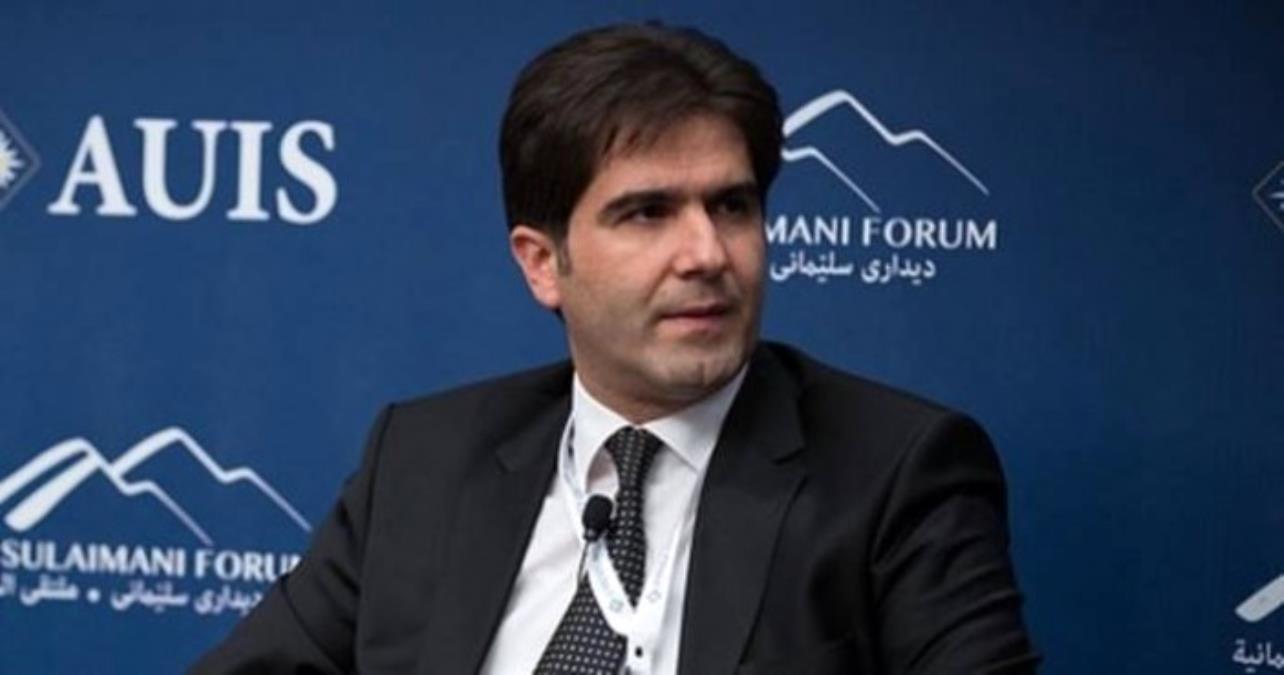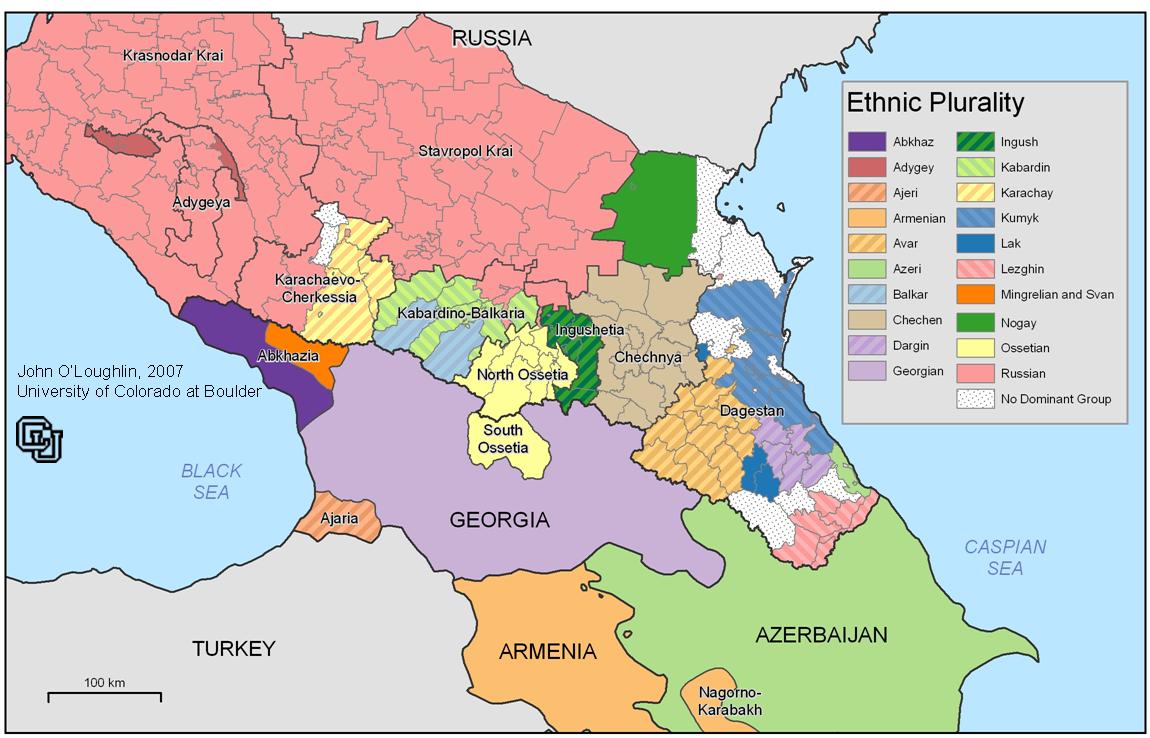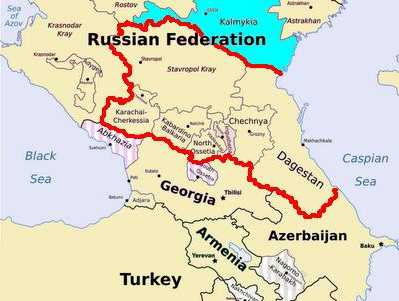Linking hijab controversy to fears of Islamic extremism may be counter-productive.
By Abdumomun Mamaraimov in Jalalabad and Saodat Asanova in Dushanbe (RCA No. 556, 14-Nov-08)
“We face a difficult choice – take the headscarf off or give up on school,” said Sahiba Yusupova, whose daughters are under increasing pressure from their school in southern Kyrgyzstan to remove headscarves on the grounds that they are too public a display of Muslim faith.
Yusupova has already had to take her elder daughter out of school in Jalalabad and send her off to the capital Bishkek to study at a private Turkish-run institution. Now the second of her three daughters is having trouble.
“The heads and teaching heads won’t listen … I see this as a kind of purge,” she said.
Seventeen years after the Soviet Union collapsed and people began to practice their faith more freely, religion remains a contentious issue in the predominantly Muslim Central Asia republics, where secular governments are fearful of Islamic extremists.
The Muslim woman’s headscarf continues to embody the tensions between governments and their more devout citizens. The battle is being played out at universities and in the workplace, but most of all in the schools where the authorities have greater powers to enforce a dress code.
Neither side appears ready to give ground. IWPR interviews in Kyrgyzstan and Tajikistan revealed uncompromising stances on either side, backed by a whole set of attitudes and grievances about the other. Muslim women who want to wear headscarves believe their human rights are under threat from abusive state officials, while to many officials, outward signs of adherence to Islam reflect an unreasonable and potentially extremist state of mind.
In Kyrgyzstan, IWPR looked primarily at the situation in the schools, where the issue arises every autumn at when a new school year begins and girls turn up wearing headscarves. In the past, schools tolerated the practice, but last year many of them began insisting that scarves did not count as part of the prescribed uniform and warning that anyone who broke the rules would be excluded. (See Kyrgyzstan: Hijab Row as New School Year Begins, RCA RCA No. 511, 04-Oct-07.)
The debate became more acute this year following a set of instructions issued by the Kyrgyz education ministry to reinforce the school uniform rules. The ministry says the document is more of a recommendation than a rule-book, but schools are interpreting it as an outright ban and girls are being excluded for flouting it.
In the education sector in Kyrgyzstan and Tajikistan, “hijab” – the requirement for modest dress which can include both a headcovering and a long over-garment – usually means only a headscarf tied under the chin. To complicate matters, the looser headscarves tied backwards that are commonly worn by women in the region are considered “non-religious” and therefore acceptable by the authorities.
Tajikistan imposed a formal ban on hijab in both schools and universities in autumn 2005. At the time, Deputy Education Minister Farhod Rahimov said girls who disobeyed would be expelled. Education Minister Abdujabor Rahmonov has equated wearing hijab with conducting “propaganda for religious ideas in a secular society”, while his officials have explained that the ban was needed because of the growth of radical groups which want to use Islam as an instrument to undermine the state.
EXCLUDED FROM SCHOOL FOR WEARING HIJAB
When Ayjarkyn Kamaldin Kyzy took to wearing a headscarf one month ago, she was immediately excluded from her secondary school in the southern Kyrgyz city of Jalalabad.
Ayjarkyn recalled what happened when her mother was called in to discuss the issue. “The school head made fun of me in front of my mother, saying the next thing would be that I’d come in wearing a ‘paranja’,” she said, referring to a long-obsolete Central Asian version of the Afghan burka.
“The head of studies Alla Vladimirovna and some of the teachers accused me of wearing the headscarf for fashion reasons. That was offensive.”
Unlike many other wearers, Ayjarkyn is not supported by her parents. Her father Kamildin says she took to praying and wearing conservative dress after a summer job at the market where she worked alongside devout Uzbek girls.
“We aren’t against praying, but why wrap yourself in a headscarf?” he asked. “We’re worried our daughter has fallen under the sway of extremists.”
“Grown ups don’t understand,” responded Ayjarkyn. “I want to go to school, but I can’t.”
Ayjarkyn belongs to a Kyrgyz family. Although strict adherence to Islam was traditionally more common among the sizeable Uzbek minority of southern Kyrgyzstan, in recent years the wearing of Muslim-style headscarves has become more popular among Kyrgyz women as well.
In Kyrgyzstan, the headscarf dispute is most apparent in the south, and although it is hard to assess the scale, Jalalabad’s education department estimates that there are seven or eight cases in each of the city’s 20 schools.
Local teacher Mukarram Muminova says her observations suggest there are up to 15 girls in each school who want to be allowed to wear hijab. “In addition, many have simply stopped coming to school because of the headscarf issue,” she added.
Zilola Akbarhojaeva, who is Uzbek, is in seventh grade at a school in Jalalabad in the south of Kyrgyzstan. She has been wearing a headscarf for the last four years and is a good student but every year it is getting tougher.
At the start of the academic year on September 1, the school authorities said she was at the wrong school because of where she lives and would have to go somewhere else. But as the argument progressed, it quickly became apparent that the real reason for attempting to get her to leave was her headscarf. After her parents discussed the matter with the local education department, an uneasy compromise was reached where Zilola can wear the scarf on a temporary basis on the grounds that she has a sore ear.
“We are not against the uniform – we have bought everything the school asks for,” said her mother Saida. “The only thing we’re asking for is that they let our daughters wear headscarves. We bought white ones that look nice and don’t make them look very different from the other kids. But the school has banned even this.
“They treat them very badly at school; they humiliate them and insult our religious sensibilities.”
The ban on hijab in Kyrgyz schools extends to teachers as well as pupils. A male head teacher who asked to remain anonymous, disagrees with the ban but says it is being widely applied in Jalalabad region.
“It goes against religious convictions and also local custom, which requires married women to wear headscarves,” he said. “A school… recently refused to take on a young teacher who wouldn’t remove her headscarf.”
IWPR found similar cases in Tajikistan, where religion plays a similarly contentious role. Mamnuna Karimova complains that her 13 year old daughter Mavzuna faces outright discrimination at her school in the northern Sogd region,
“My child wears a headscarf not because it’s fashionable but because of the religious views of our family,” she said. “Now she gets a lot of humiliation at school. The children see how negatively the teachers view these girls – making them take their headscarves off in public or barring them from lessons – and that behaviour naturally provides [schoolchildren with] a motive for mistreating them.”
The Garm valley of eastern Tajikistan, where Islam has traditionally had a strong hold, has seen many girls dropping out of school because of the headscarf ban.
Local teacher Halima Yunusova claims pupils’ insistence on wearing hijab is a pretext. “After the collapse of the Soviet Union, many girls stopped going to school after [the penultimate] year nine, mainly because of early marriage and concerns at home. Now they’re campaigning to wear hijab because then they’ll be officially banned from going to school,” she said.
TAJIK BAN EXTENDS TO UNIVERSITY
However, claims that women are deliberately trying to drop out of education are clearly not true of those who go on to university. Malohat Sobirova, who comes from a remote village in southern Tajikistan, found it impossible to continue at university because of the general hostility to her insistence on wearing hijab.
“I really wanted to get a higher education, have a career and be a useful member of society, but unfortunately I was excluded because I wear hijab,” she said. “It got to a point where I felt like an outcast. I couldn’t keep on fighting for my rights so I had to go back home to my village. I abandoned my dream of higher education and now I’m unemployed.”
She insists she was right not to give in, “I grew up in a traditional Muslim family and I regard it as an obligation to wear hijab. I can’t appear in public without my head being covered; that’s unacceptable for a true Muslim woman.”
Last year, student Davlatmo Ismailova brought the first and so far only court case against the education ministry and the Institute of Foreign Languages, which had excluded her for wearing hijab.
She lost her case, and remains bitter about it. “Under the constitution, all citizens of Tajikistan are supposed to be equal, but my case showed that if spiritual values don’t coincide with spiritual ones, girls like me have no chance of getting a good education and working anywhere prestigious,” she told IWPR.
By contrast, another student, Rahima Davronova, has opted for a compromise with the authorities at Khujand State University in the north of Tajikistan. Outside the premises, she can tie her scarf under the chin to fulfil the hijab requirements, but when she goes in she knots it behind her head to make it into the traditional Tajik headscarf with no religious connotations. “I just use a big scarf,” she explained.
OFFICIALS DENY EXISTENCE OF BAN
Unlike Tajikistan, where the hijab ban is official, education officials in Kyrgyzstan are quick to insist no instructions have been given to schools, merely a recommendation.
According to Chyrmash Dooronov, head of the education department for Jalalabad city, school heads “have no right to stop children attending classes”, since the order issued by the education ministry does not explicitly ban headscarves, but simply fails to mention them in the list of required uniform items.
Kylym Sydyknazarova of the national education ministry’s schools department says the document is really only a set of general guidelines.
“The education ministry recommended that schools opt for a single school uniform themselves; in other words, that parents and teachers decide what the uniform should be and set this down in the school rules,” she said. “We can neither allow or forbid the wearing of headscarves.”
Abdumalik Sharipov of local human rights group Spravedlivost says the ministry document does not say anything about headscarves, so “everything that isn’t forbidden by law should be allowed”.
“None of the schools in Jalalabad that we asked could produce a copy of the order. It isn’t clear what they are basing their ban on…. If the order did ban the wearing of headscarves, we’d contest it in court,” he said.
Attempts by local government education officials to blame the schools for the hijab ban may be disingenuous. One school headmaster confirmed that local officials were exerting verbal pressure on schools to change their internal rules. “We couldn’t initiate that by ourselves as the parents wouldn’t back this kind of change to the rules,” he said.
EQUATING HIJAB WITH ISLAMIC EXTREMISM
As officials argue their case, the subtext to the dispute rapidly becomes clear – they are hostile to headscarves because they regard Islamic clothing as an external sign of radical extremist views.
In both Tajikistan and Kyrgyzstan, their main concern is Hizb-ut-Tahrir, a group that advocates the removal of Central Asian secular governments and the creation of an Islamic state. Although members insist it is non-violent, regional governments have blamed it for a number of attacks over the years. Despite sweeping arrests in Uzbekistan, and smaller numbers of detentions in Kyrgyzstan and Tajikistan, the group still attracts new members, in part because its messages speak to socially and economically marginalised groups in a way that governments seem unable to do. (For more on this, see Islamic Group Quietly Builds Support in Kyrgyzstan, RCA No. 516, 16-Nov-07.)
Unlike other regional states, the Kyrgyz criminal code does not explicitly ban Hizb-ut-Tahrir membership, although the country’s Supreme Court issued a ruling prohibiting the group from operating in 2003, and the constitution prohibits faith-based political parties in general.
In Dooronov’s view, in some cases Hizb ut-Tahrir has “addled parents’ minds”, while in others it is the children themselves who are drawn towards the group. In the former case, he would like to see “irresponsible” parents prosecuted for depriving their children of an education.
Damira Alimjanova, who used to head the regional educational department and now serves as deputy governor of Jalalabad, is a well-known opponent of headscarves in schools. Like other officials, she says schools should not exclude wearers, but she remains extremely suspicious of them.
“I don’t want to accuse all headscarf-wearers of extremism, but how can one be sure there aren’t some among them?” she asked.
The activities of Hizb ut-Tahrir worry the opponents of hijab in Tajikistan, too. But some like Gallia Rabieva, a member of Tajikistan’s parliament, also look back to the 1992-97 civil war, in which the opposition force was led by Islamic guerrillas. “We’ve already been burnt by that one…. We are always afraid these religious organisations will try to drive the thin end of the wedge in somewhere else,” she said. “We fear the secular nature of our state will be placed under threat.”
Recalling Soviet-era campaign against the veil or “paranja”, Rabieva said, “Our grandmothers risked their lives to throw off the paranja in the 1920s….they fought for women’s freedom, so when I see a young woman dressing herself like that of her own free will, it makes me feel ill.”
Mainstream Muslim groups disagree strongly with such views. They oppose extremists, and say it is wrong to lump all devout people together with radicals.
In Tajikistan, the Islamic Rebirth Party, the civil war-era armed opposition referred to by Rabieva, is now a legal political party and has taken up a number of hijab cases where women felt their rights were being abused.
The head of Kyrgyzstan’s official Islamic establishment, Mufti Murataly-Ajy Jumanov, says his local representatives are dealing with requests for help they have received from hijab wearers.
At the same time, the mufti says the Kyrgyz intelligence services have good reason to be concerned about extremist groups. “You have to understand them; they have a job to do,” he said.
By contrast, the muftiate’s representative in Jalalabad, Abibilla-Aju Bapanov, is more outspoken in his opposition to the way the state authorities are handling the headscarf ban. “In a country where the overwhelming majority of the population are Muslim, you can’t just copy the Europeans. That might have been possible 15 years ago, but not now, because Islam has taken deep roots in people’s consciousness.”
Bapanov’s predecessor as chief cleric in Jalalabad, Dilmurat-Ajy Orozov, goes even further, saying, “The state doesn’t respect its citizens’ rights, the [parliamentary] deputies don’t see that there’s a problem, and the president isn’t paying any attention.”
Tursunbek Akun is Kyrgyzstan’s human rights ombudsman, and well known as a defender of Muslim rights. On a recent visit to southern Kyrgyzstan, he described the headscarf ban as a “gross violation of human rights”, and promised to make the national authorities aware of the concerns expressed by local people.
MORE NUANCED APPROACHES NEEDED
Some analysts interviewed for this report were more concerned about the spread of Islamic practices than the rights of those who want to wear headscarves. Manuchehra Jumanova, a political scientist in Tajikistan, for example, thinks the authorities there are basically doing the right thing by placing restrictions on what .
“After all, we have a secular state, not an Islamic one where all women wear hijab,” she said.
Experts in Kyrgyzstan, however, warn that this issue is potentially explosive and the government should therefore try more subtle approach than simply banning – or appearing to ban – the wearing of headscarves.
“It’s a very sensitive issue that requires a delicate approach,” said Sania Sagnaeva, a senior analyst with the International Crisis Group. “There’s a risk of conflict [even] if there are no other motives for this. This is about society’s tolerance overall. Headscarves are a symbol of belonging to one religion, but officials see the issue as an attempt to dictate terms.”
Sharipov of the Spravedlivost group added, “There’s no point in unnecessarily creating problems where there aren’t any. They need to allow those who want to wear headscarves to do so and set general guidelines for this,” he said. “Haven’t we enough things engendering popular discontent already – the energy crisis and price rises?”
He added, “People are already saying openly that all this is directed against Islam generally. If the problem isn’t resolved once and for all, parents will demand that new schools be set up where the children can dress according to religious precepts. That would divide society along religious lines.”
Spravedlivost’s leader, Valentina Gritsenko, says her group is planning legal action against Kyrgyz officials who stop girls wearing headscarves and expel them from school.
“The [local] education departments are breaking two rights at once – the girls’ right to religious observance and their right to receive an education.”
If the authorities in Kyrgyzstan fail to move, some are warning of growing social tensions.
“People are planning to hold protest rallies,” said Bapanov. “We are restraining them and asking them to keep the peace until the matter is resolved through legal channels.”
Jamal Frontbek-Kyzy, who heads the Mutakallim women’s group, has succeeded in getting the authorities to sit up and take notice. Last week, she wrote to President Kurmanbek Bakiev and the Kyrgyz parliament, and a subsequent meeting with officials resulted in a promise to resolve things “in a positive manner”.
Having already won a four-year battle for women to be allowed to keep their headscarves on in passport photos, Frontbek-Kyzy is confident about this campaign.
“I am sure the outcome will be positive, as the headscarf ban was thought up by officials who are not only ill-informed about Islamic issues, but also have a poor knowledge of the constitution,” she said.
Abdumomun Mamaraimov is an IWPR-trained journalist in Jalalabad, and Saodat Asanova is IWPR Tajikistan Country Director.





